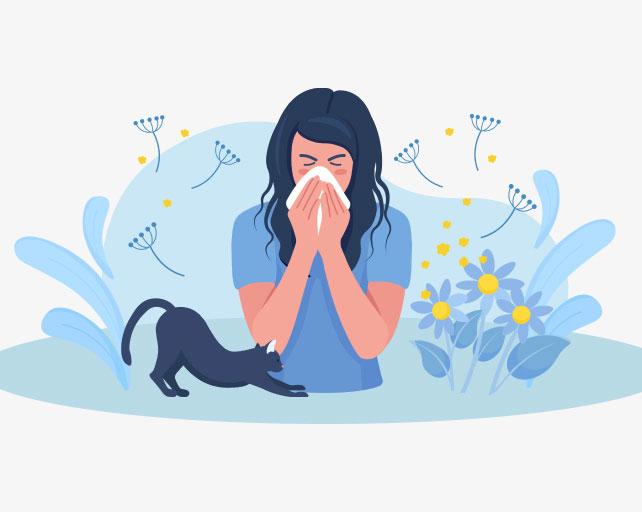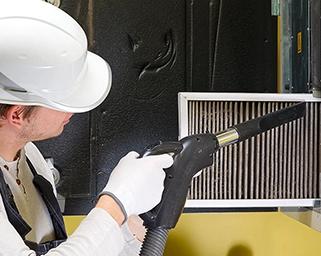Four Reasons Why It’s Important to Change Your Air Filters
Do you know when you last changed your HVAC air filter? Learn why staying on top of this routine chore is vital for your health and the health of your HVAC system.
Air filters play a dual role in your home’s cooling and heating system: By filtering out dust and other particulates, they help make the air you breathe as clean as possible—and they also protect your air conditioner, heat pump, or furnace. In fact, veteran HVAC technicians will tell you that dirty filters are one of the most common causes for a service call.
And the common cause for dirty filters? Homeowners forget they need changing and when they do think about it, they often don’t remember the size of the filter. Fortunately services like Trane Filters by FilterTime are helping automate the process to help avoid these four pitfalls of dirty filters.
Four Reasons to Keep Your Air Filters Clean
US Environmental Protection Agency studies have found that indoor air is two to five times more polluted than outdoor air—so regularly changing out your filters can be a vital step for your health and the health of your HVAC system.
- Decreased energy consumption. Dirty or clogged filters obstruct airflow, making your system work harder than it needs to. This can even lead to dirty air bypassing the filter and collecting on the evaporator coil, reducing its heat-absorbing capacity. According to the US Department of Energy, replacing a dirty filter can lower your air conditioner’s energy consumption by 5-15%.
- Better indoor comfort. When an air filter is dirty, it restricts proper air flow through your home—which can lead to rooms that don’t get enough warm or cool air to keep you comfortable. Keeping your filters clean can also add to comfort in another way—decreasing the noise from your supply grilles.
- Improved air quality. Small particulates in our indoor air can have short and long term effects on health, from irritation of the eyes, nose, and throat to more serious respiratory problems. Proper air filtration can also make a big difference for people who suffer from spring and summer allergies, or who live in areas with warm-weather wildfires. “When selecting air filters, we recommend looking for filters with a Minimum Efficiency Reporting Value (MERV) rating of 13 or above, to effectively remove small particles,” says Dr. John McKeon, CEO of Allergy Standards Ltd. “Additionally, we advise seeking filters that carry the CERTIFIED asthma & allergy friendly® mark, as they meet specific standards for allergen reduction.” Beyond HVAC filters, it may be worth exploring high-efficiency options such as certified whole home air cleaners that meet the standards set by the asthma & allergy friendly® Certification Program.
- Reduced risk of mechanical issues. As noted above, dirt and debris bypassing the filter can build up on your system components. Over time, that can lead to overheating blower motors, iced-up evaporator coils, short-cycling units, and dust buildup in your ductwork. Any of those issues will result in system downtime and a potentially costly fix, which is why regularly replacing your air filters is a budget-friendly maintenance task.
How To Change Your Air Filters
Even if you buy filters that are rated for more than 30 days, it’s a good practice to check them monthly during heavy usage periods such as summer or winter. If they’re dirty, replacing them is simple.
- Turn off the system using the thermostat, circuit breaker, or switch.
- Locate your filter(s). Some filters are located on the side or bottom of your air handler, while others will be mounted in the ceiling or wall behind a hinged cover that’s part of your duct system.
- Open the access cover and remove the old filter. Take note of the arrow on the filter, which will tell you which direction it should be oriented for proper airflow.
- Insert the new filter with the airflow arrow pointing in the right direction and close the access cover. They’re designed to be a snug fit, so be careful not to bend or tear the filter as you move it into place. If you’re using a reusable filter, you’ll want to clean it thoroughly with a gentle brush and mild detergent before replacing it.
Contact Your Local Comfort Specialist
Your local Trane dealer can assist with any questions about the proper filter for your system—and a service technician will be happy to offer guidance during any service call. You can order new Trane Comfort Performance filters online, or for the utmost convenience, sign up for Trane’s filter subscription through the Trane Home app or at TraneFilters.com.




